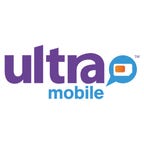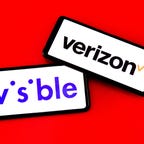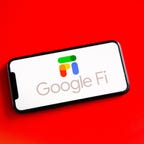

Wireless starting at $8 per month
- Flexible plans from Ultra Mobile

Runner-up for unlimited prepaid phone plan
Mint Mobile 12-month plan
Most people with cellphones opt to subscribe directly to mobile providers such as AT&T, T-Mobile or Verizon for wireless service. The major providers aren't the only option. You can save money on your mobile plan by going with one of the smaller providers around. Traditional wireless providers tout unlimited data plans as the big attraction, but smaller carriers still offer a variety of plans with high-speed data or even a better price on unlimited plans. Plus, there's no long-term commitment to worry about. If you want to switch over, these are the best prepaid phone plans right now.
I've covered the wireless industry for more than a decade and know there are a ton of prepaid service providers. For this article, I'm going to focus on just a few: Boost Mobile, Cricket, Mint, Google Fi Wireless, MobileX, Tracfone, Metro by T-Mobile, Total by Verizon, Verizon Prepaid and AT&T Prepaid. Since these carriers also have so many different prepaid cellphone plan options, I'll focus on the best options for under 5GB of data, under 15GB of data and the best unlimited plans.
Read more: Cheap Phone Plans Compared
Before we get to the plans, to get the best deal you need to make sure you have the coverage that you need. This makes it very hard for us to give a blanket recommendation of any one carrier. T-Mobile's service in New York may be excellent, but if you're in rural Iowa, Verizon is more reliable.
While your mileage may vary, the good news is that these networks are growing and improving all the time, particularly as the three major players race to blanket the US with 5G. It's quite possible that you left a network complaining about its sparse service a decade ago, but now it's beefed itself up because of that race to acquire customers.
If you know any friends or family in your area that already use the carrier you're considering, ask about their experience. You could also go to a carrier's store and see if they offer any free ways to try out the service before switching over, such as T-Mobile's Network Pass. Verizon offers a similar 30-day "Test Drive" program, while the Cricket prepaid service has its own trial program that lets you sample parent AT&T's network.
Boost Mobile will use a combination of AT&T, T-Mobile and parent Dish's own network.
As with the leading carriers, there are periods when the prepaid players offer deals. Boost Mobile used to run a promo for new customers that let you get three lines with unlimited talk, text and data for $90 per month ($30 per line) after "your first payment of $100." It has since added a new unlimited plan that is $25 per month for new users, although each line must be separate and can't be grouped on a family plan.
Some prepaid providers will even give discounts on buying a new device, but unlike the leading carriers, don't expect the same big promotions offering a free new iPhone or Samsung's latest Galaxy. Those deals are often tied to 24- or 36-month installment plans, which prepaid -- by its nature -- doesn't offer.
Visible, which is owned by Verizon and runs on its network, has updated its plans again and added a new annual option. When you pay up front, this service runs $275 for a year and gets you Visible's namesake base plan. Included in this option is unlimited talk, text and data in the US (though without full access to Verizon's fastest 5G UW networks), unlimited hotspot (though speeds are capped at 5Mbps), and unlimited talk and text -- but no data -- in Mexico and Canada.
At $275 for a year, it breaks down to $22.91 per month, which is a small discount from the regular monthly rate of $25. It's also slightly cheaper than US Mobile's Unlimited Starter, our previous pick in this spot, which runs $23 per month (when purchased using its annual option, otherwise it's $29 monthly). US Mobile, however, includes 35GB of high-speed data (including on faster 5G networks) and 10GB of hotspot data, with 1GB of international data.
Both US Mobile and Visible include taxes and fees with their pricing, and either choice is solid. We give the edge to Visible because its data speed doesn't drop to 1Mbps after the high-speed data is used up, and it includes unlimited hotspot data, even if speeds are capped at 5Mbps.
Ultra Mobile is everything you need in wireless to connect with friends, family and communities near and far at an Ultra-affordable price. Its plans include free calling to 90-plus international destinations and talk and text in Mexico and Canada. With both single and multi-month plan options, Ultra offers the flexibility and reliability consumers are looking for with high-speed data and nationwide unlimited talk and text plans on T-Mobile's 5G Network.
For a limited time, Ultra is offering 20% off 12-month plans and 10% off six-month plans. Take advantage of this offer while it lasts, and make the switch to Ultra.
Ryan Reynolds' phone company has made a name for itself with its quirky advertising, but it also has one of the better offers for unlimited data that we've seen. For 12 months, you can get unlimited talk, text and data for $30 per month per line. Running on T-Mobile's networks, you get 40GB of high-speed data on 5G and 4G LTE per month, although if you do blow through that before your 30-day period resets, your speeds will slow to "3G speeds."
There's also 10GB of high-speed hotspot data and free international calls to Mexico and Canada.
Google's phone service has raised its monthly pricing for group plans, making the service a bit less appealing compared with major providers. A family of four, for instance, will now pay $100 per month ($25 per line) to get the Simply Unlimited plan. This used to run $80 per month ($20 per line). The plan includes not only unlimited talk, text and 35GB of high-speed data but also 5GB of mobile hotspot use. There's also free roaming in Canada and Mexico, though taxes and fees aren't included in the sticker price.
Google Fi Wireless runs largely on T-Mobile's network and its service includes 5G access.
This one is actually a bit complicated.
Cricket and Metro each offer perks with some of their top unlimited plans -- in the case of Cricket, you get a subscription to Max with ads, while Metro's top two unlimited plans offer one year of ViX Plus and 100GB of Google One storage. While Metro used to be cheaper, it has become pricier and dropped the inclusion of Amazon Prime on its main plan.
Metro actually still has those plans but has hidden them under a Heritage Plans section on its website that requires you to call customer support to get them. This runs for an undisclosed limited time, but if you're willing to go down this route, it's the best option. A single line runs $60 per month, while three or four lines will cost you $120 per month.
Taxes and fees are included in that price, as is 15GB of hotspot data, 100GB of Google One and a subscription to Amazon Prime. Again, you need to contact Metro's Customer Care team at 888-863-8768 to get this plan. More details can be found here.
Other options: As for the new main plans, for a single line or two lines Metro's middle plan is still actually a bit cheaper than Cricket's. A single line here is $50 per month while two lines are $80 per month. That's slightly cheaper than Cricket's option which runs $55 per month for a single line (with AutoPay) or $90 for two lines.
Both cost the same $110 per month for three lines, though since Cricket includes Max and more hotspot data (15GB versus 5GB from Metro's middle plan) it wins this battle.
When you get to four or more lines, Cricket's plans are actually $10 cheaper than Metros, once again making it the better play.
Verizon's Total by Verizon service includes Disney Plus' Premium no-ads option with its top plan, but at $60 per month for a single line and $165 per month for four lines, it's probably not worth it.
If price is the biggest factor for you, look at Google Fi's Simply Unlimited plan we mentioned above.
If you need anything less than four lines, Cricket, Total or Metro are a lot pricier than Mint. One phone line with this top unlimited plan runs $60 a month, two lines are $90 a month and three lines are $120.
When it comes to data under 15GB, Mint once again has the best value if T-Mobile's network is solid in your area.
Getting 15GB of 4G LTE/5G monthly data is $20 per month at Mint if you're a new subscriber and buy in 12-month increments. After that, you can buy three more months at $35 per month ($105 total), six months at $25 per month ($150 total) or another year at $20 per month ($240 total).
Boost Mobile now has a similar 15GB per month plan for $20 per month, but it requires you to prepay for a full year, with no options for shorter periods.
Other options: Google Fi has a "bill protection" feature designed to refund you for data you don't use, but with a maximum monthly charge of $80 per month for one line and 6GB of data and unlimited talk and text, I think you're better off looking elsewhere instead of having to calculate how much data you're using.
AT&T has an online offer of 16GB per month if you prepay the $300 for a full year (equating to $25 per month). If you use up the 16GB, you will still get unlimited data, but it will slow speeds down to 1.5Mbps until your month resets.
Tracfone's 10GB plan generally runs $40 per month, though you can prepay for a year for $384 (which breaks down to $32 monthly).
The perk with the AT&T and Tracfone plans is that any unused data carries over to the next month. For the latter, if you're looking for a prepaid provider on Verizon that could be your pick.
Boost Mobile has a couple of plans offering 5GB or less, particularly if you're a new customer but its cheapest option for those who don't need a lot of data is its new customer offer of 1GB of monthly data for $100 for the year. It is worth noting that you will need to prepay for 12 months of service to get this deal, which breaks down to $8.33 per month.
While not as easy to find, you can access this plan by going to Boost's plans section, choosing use my phone and then selecting the 12-month option.
The carrier offers a $15 per month 5GB plan for new users as well, which includes the ability to use that allotment for mobile hotspots. That's on par with Mint Mobile's similar 5GB for $15 per month option, though Mint requires new users to be on its three-month plan (or prepay for the year) to get that rate. Boost Mobile allows you to do this monthly as a new customer (with a three-month option available as well).
Metro, Total by Verizon and Cricket each charge $30 a month for 5GB of data and Tracfone has a 4GB data plan, but that runs $25 when on auto-refill ($30 without).
Other options: T-Mobile has a few T-Mobile Connect deals including a $15 per month option with unlimited talk/text and 5GB of data. The carrier also has a $10 per month Connect option that includes 1,000 domestic minutes for talk, 1,000 domestic and 1GB of data.
TextNow also has a deal where you pay $5 for a SIM card and then can free talk and text (when inside the TextNow app), access to T-Mobile's network as well as 1GB of data per month for use in a handful of apps, like Gmail, Waze, Uber, Lyft, Outlook, Apple Maps and Google Maps. If you don't need much beyond those apps this option could work.
As we said at the top, the best deal is the one that works best for you.
What exactly is a prepaid phone plan?
Will your area get good cell coverage?
Read more: What to Know Before You Buy a New iPhone or Android
Picking a wireless plan and carrier is a very individualized process. What works for you and your family's needs may be vastly different from your friends or neighbors. Even geographically, some areas have better AT&T coverage while others work best on Verizon or T-Mobile (and vice versa). The picks we make are based on over a decade of covering and evaluating wireless carriers, their offerings and their performance.
Since choosing a provider is unique, we focus on larger plans and the value they provide; as well as calling out ways you can test the different networks in your area for yourself so you can make the best pick.





























